
VEITH symposium is one of the most authoritative, large-scale and long-standing academic events in vascular surgery in the world. Thousands of top experts from vascular surgery, interventional radiology, interventional cardiac surgery, and other vascular surgery fields from around the world attend the VEITH symposium conference each year. Here brings together various research data updates from the world, very pioneering, prospective and controversial topic discussion, clinical technology sharing with great application value, the latest and cutting-edge medical devices and technology exploration, face-to-face communication opportunities for world-class authoritative vascular surgery experts, and so on.
On November 14, 2023, during the International Congress of Vascular and Endovascular Angiology (VEITH symposium) held at the Hilton Hotel, New York Center, USA, Professor Luo Mingyao from Fuwai Hospital, Chinese Academy of Medical Sciences gave a wonderful speech on the topic of "Morphological Risk Factor Analysis of RAAA".

Luo Mingyao
Fuwai Hospital CAMS & PUMC
Ⅰ
A multicenter prospective cohort study found that patients with AAA > 5 cm in diameter who refused or were not suitable for surgery had 1-year rupture rates of 9.4% for primary diameter 5.5 to 5.9 cm, 10.2% for 6.0 to 6.9 cm, 19.1% for 6.5 to 6.9 cm, and 32.5% for > 7 cm.
Why is there a significant difference in rupture time?
Factors affecting AAA rupture also include age, sex, anatomical geometry, degree of curvature, and intraluminal thrombus, and such studies are gradually increasing, but conclusions tend to be conflicting. Diameter doesn 't represent everything.
Possible Risk Factors for AAA Rupture – Endoluminal Thrombosis
The proportion of ILT was significantly higher in RAAA (< 60 mm) than in non-RAAA. ILT is therefore associated with early rupture. For RAAA > 80 mm, ILT accounts for a smaller proportion of the total volume than selective AAA, and ILT may have a certain protective effect.
Possible Risk Factors for AAA Rupture – Tortuosity
"Twist" has multiple definitions: bending and twisting of the centerline, increasing length of the centerline, angle and lateral displacement of the neck. Some studies have reported that RAAA bends less than unruptured aneurysms; others have found that aortic bends increase peak wall stress, leading to aneurysm rupture. Although conclusions may vary in different studies, they all suggest that morphological factors may influence the risk of AAA rupture, and there are still many questions worth investigating in this area.
Ⅱ
A case-control study in Fuwai Hospital, CAMS & PUMC from 2010 to 2021
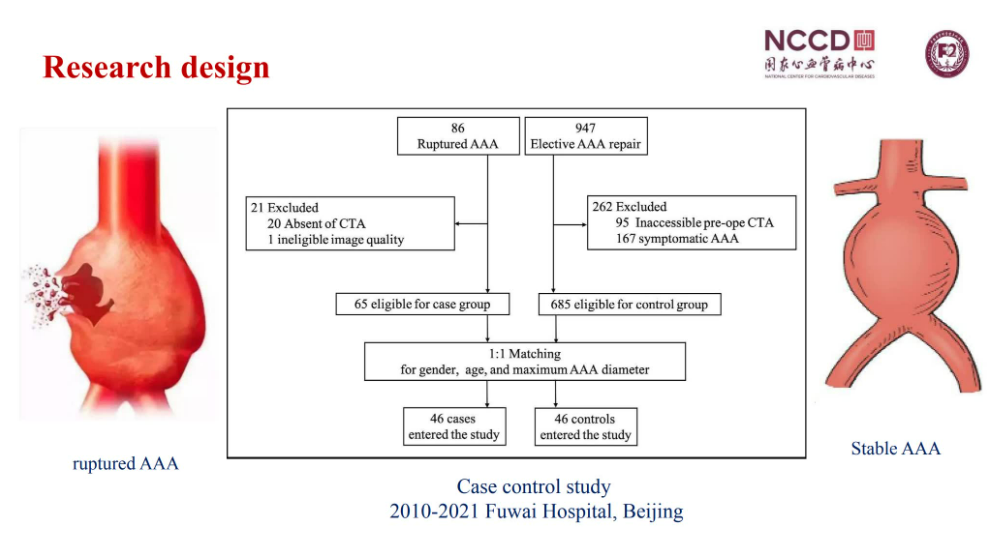
01. Demographic and clinical characteristics
Gender, age, height, weight, smoking, diabetes mellitus, hypertension, hyperlipidemia, chronic obstructive pulmonary disease, chronic kidney disease, previous stroke.
Morphological characteristics:
· Centerline length (L1), straight line length (L2), and degree of curvature (outer wall length/L2) of the infrarenal abdominal aorta
· Length of aneurysm neck, proximal diameter, distal diameter
· Total volume of AAA, volume of intraluminal thrombus
· Proximal, distal, and minimum diameters and areas of bilateral common iliac arteries
· Proximal diameter and area of external iliac artery
02. Morphological parameters of AAA
Patients in the ruptured group had higher curves and shorter aneurysm necks.
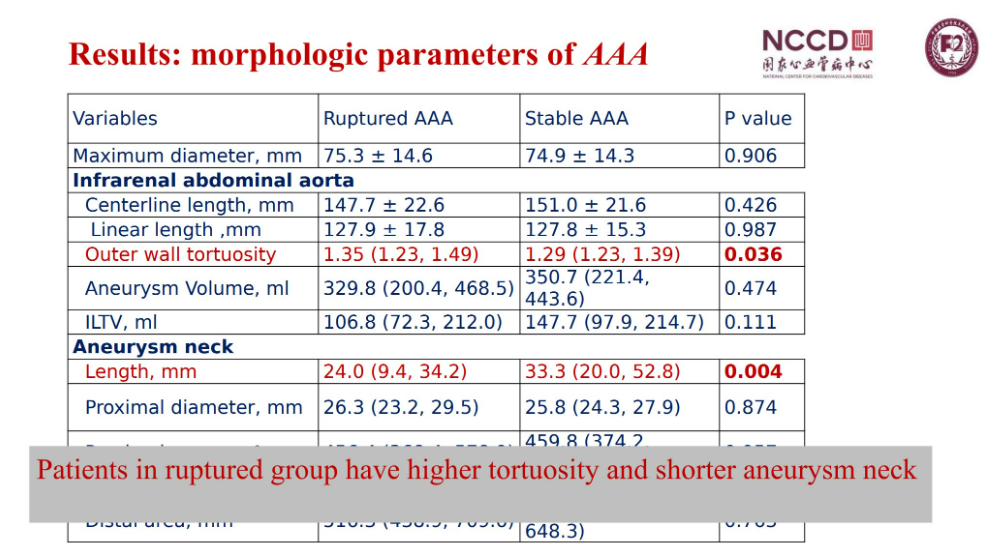
03. Morphological parameters of common iliac artery
There were statistically significant differences in the minimum diameter and area, proximal diameter and area of CIAs in the rupture group.
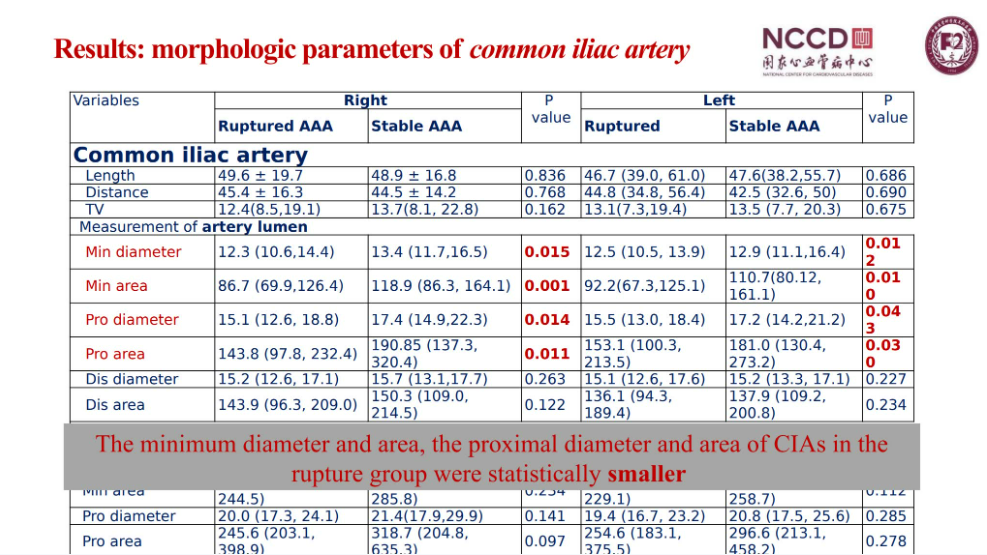
04. Morphological parameters of external iliac artery
The proximal EIAs area was significantly smaller than the rupture group.
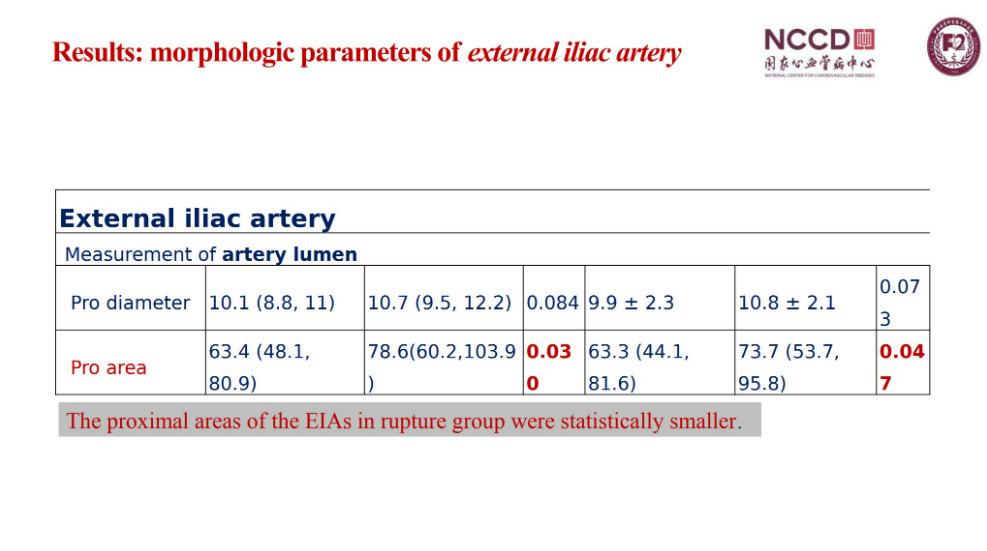
05. Risk factors for rupture
1. The shorter the neck, the smaller the iliac joint, the higher the degree of lateral wall bending, and the higher the risk of rupture;
2, in a multivariate logistic regression model, three variables, neck length, curvature, and minimum lumen area of two CIAs were included.
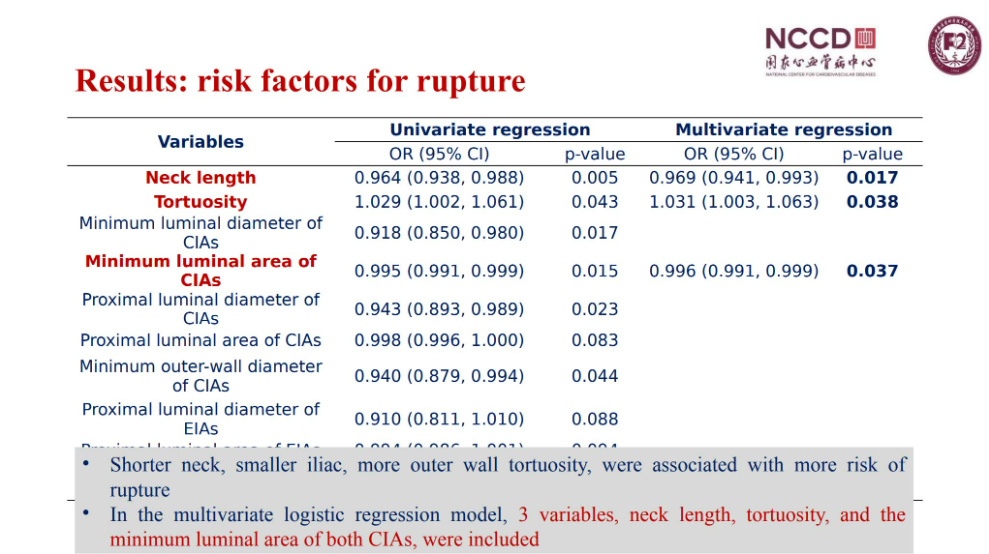
Ⅲ. Summary
1, the relationship between geometric parameters and RAAA has aroused much interest. However, previous studies have contradicted results, indicating that there are many factors associated with rupture and the mechanism is complex.
2, this study showed that shorter aneurysm necks, higher curvature, and smaller outflow arteries were associated with an increased risk of rupture.
3, this study highlights the potential of using outflow parameters as new and additional tools for rupture risk assessment.


